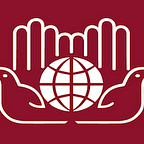Connecting Schools in Kyrgyzstan
During the inaugural Design for Humanity Summit on June 22, 2018, Mike Fabrikant and Naroa Zurutuza addressed connectivity and education, using the case study of Kyrgyzstan
Below is the Kirk Fabrikant’s and Naroa Zurutuza’s contribution to the newly released Design for Humanity Summit Yearbook available for download here.
Advances in technology are transforming the world and reshaping society. Connectivity has changed the way we interact with each other, the way we receive basic services such as healthcare, and the way we work. In fact, digital skills are becoming essential for our everyday lives.
However, this change comes with challenges and with the danger of deepening inequalities. To tackle this issue and to ensure that every child and young person has equal access to opportunity and choice, UNICEF is mapping every school in the world and measuring their connectivity in real-time. We believe that having this base layer of information will help reduce the digital divide in education.
As an example, in Kyrgyzstan, UNICEF and the government are working together to create a countrywide map of educational facilities. As of March 2017, only 30 per cent of schools in Kyrgyzstan were connected to the Internet. Thanks to this work, the government has committed to connect the remaining schools by the end of the 2018–2019 school year. Internet connectivity will not only support children’s access to education and 21st-century skills, but it will also support the government’s program aimed at the digital transformation of the Kyrgyz Republic towards a sustainable economy, smart society, and more transparent governance.
In order to be able to do this at scale, UNICEF is exploring the use of high-resolution satellite imagery and deep learning techniques to automatically map schools. Partnering with academic institutions and the private sector, we are developing Convolutional Neural Network-based classification algorithms that are able to identify school patterns recognized from satellite imagery. The work is part of Magic Box, an open source platform that leverages new sources of real-time data (i.e. satellite imagery, mobile phone or social media) and new computational techniques for humanitarian and development purposes.
Learn more about the Design for Humanity Summit II, taking place June 21, 2019 at Fordham University’s McNally Amphitheatre here.
About the IOM — UN Migration
Established in 1951, IOM is the leading inter-governmental organization in the fi eld of migration and works closely with governmental, intergovernmental and non-governmental partners. With 173 member states, a further 8 states holding observer status and offices in over 100 countries, IOM is dedicated to promoting humane and orderly migration for the benefit of all. It does so by providing services and advice to governments and migrants. IOM works to help ensure the orderly and humane management of migration, to promote international cooperation on migration issues, to assist in the search for practical solutions to migration problems and to provide humanitarian assistance to migrants in need, including refugees and internally displaced people
About the IIHA
The Institute of International Humanitarian Affairs (IIHA) prepares current and future aid workers with the knowledge and skills needed to respond effectively in times of humanitarian crisis and disaster. Our courses are borne of an interdisciplinary curriculum that combines academic theory with the practical experience of seasoned humanitarian professionals. The IIHA also publishes on a wide range of humanitarian topics and regularly hosts a number of events in the New York area, including the annual Humanitarian Blockchain Summit and Design for Humanity Summit.
For media inquiries please contact:
Camille Giacovas
Communications & Research Officer, IIHA
cgiacovas@fordham.edu
Angela Wells
Public Information Officer for the International Organization for Migration’s Department of Operations and Emergencies
awells@iom.int
